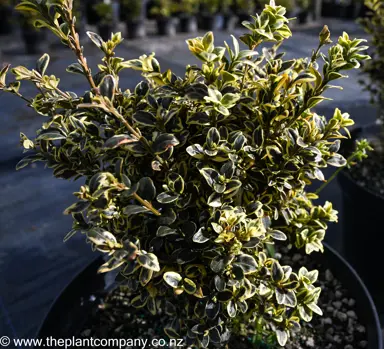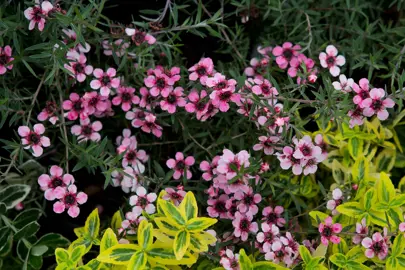Buxus sempervirens
Boxwood, Englis Box
Buxus sempervirens, commonly known as Boxwood or Box Hedge, is commonly used in English and formal gardens as a low hedge. This evergreen produces masses of small, dark green leaves which are held densely on short stems as it grows to 1 m tall and the same. It is often trimmed into a hedge about 30-75 cm tall. Buxus sempervirens is commonly trimmed into a small hedge for borders, used for topiary, or maintained in a container. Box hedges are a fantastic feature in high-end gardens across the world.

















